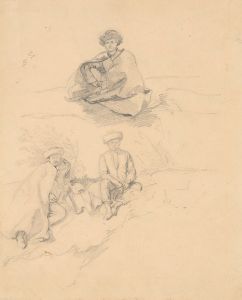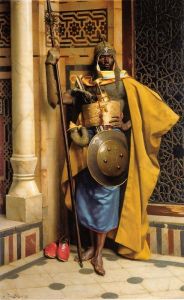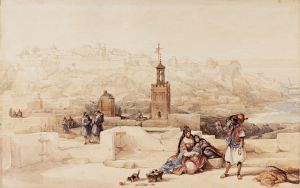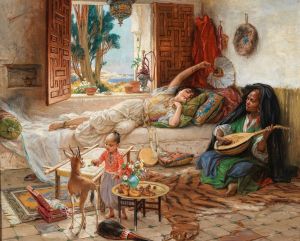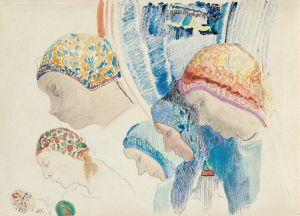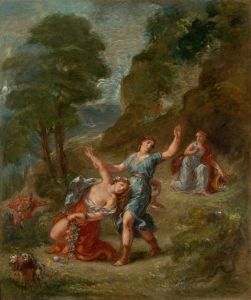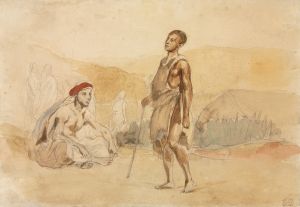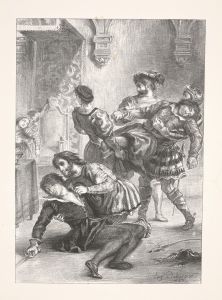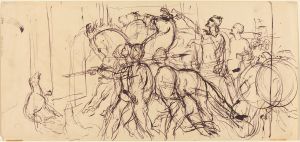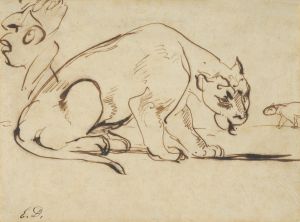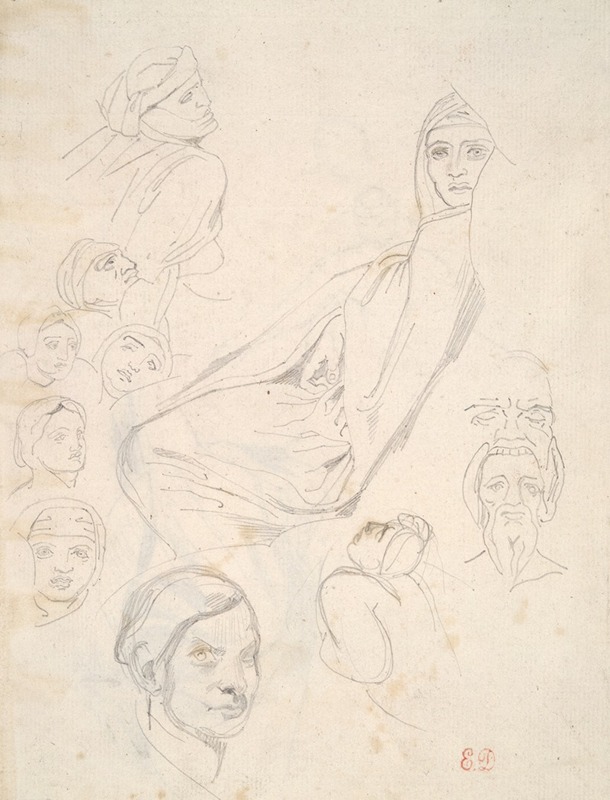
Sheet of North African Pencil Studies
A hand-painted replica of Eugène Delacroix’s masterpiece Sheet of North African Pencil Studies, meticulously crafted by professional artists to capture the true essence of the original. Each piece is created with museum-quality canvas and rare mineral pigments, carefully painted by experienced artists with delicate brushstrokes and rich, layered colors to perfectly recreate the texture of the original artwork. Unlike machine-printed reproductions, this hand-painted version brings the painting to life, infused with the artist’s emotions and skill in every stroke. Whether for personal collection or home decoration, it instantly elevates the artistic atmosphere of any space.
"Sheet of North African Pencil Studies" is a drawing by the renowned French Romantic artist Eugène Delacroix. Delacroix, born on April 26, 1798, and passing on August 13, 1863, is celebrated for his expressive brushstrokes and his study of the optical effects of color, which profoundly shaped the work of the Impressionists. His works often depicted dramatic and exotic subjects, and he is considered one of the leading figures of the Romantic movement in art.
The "Sheet of North African Pencil Studies" is a testament to Delacroix's fascination with the cultures and landscapes of North Africa. This interest was sparked by his journey to Morocco in 1832, which was part of a diplomatic mission. The trip had a lasting impact on Delacroix, providing him with a wealth of visual and cultural material that he would draw upon for the rest of his career.
The drawing itself is a collection of studies, likely created during or after his travels in North Africa. These studies typically include detailed observations of people, costumes, animals, and architecture, capturing the essence of the region's vibrant life and diverse culture. Delacroix's keen eye for detail and his ability to convey the dynamism of his subjects are evident in these pencil studies.
Delacroix's North African studies were not merely academic exercises; they were integral to his artistic process. He used these sketches as references for his larger, more finished works. The immediacy and spontaneity of his pencil studies allowed him to capture fleeting moments and intricate details that would later inform his paintings. This method of working from life and then translating those observations into more elaborate compositions was a hallmark of Delacroix's approach to art.
The "Sheet of North African Pencil Studies" reflects Delacroix's admiration for the people and landscapes he encountered. His drawings often depict figures in traditional attire, animals such as horses and camels, and scenes of daily life, all rendered with a sensitivity and respect for his subjects. These studies are characterized by their fluid lines and dynamic compositions, showcasing Delacroix's skill as a draftsman.
Delacroix's North African journey and the resulting studies had a significant impact on his work. The vivid colors, dramatic contrasts, and exotic themes that he encountered in North Africa would become recurring elements in his paintings. Works such as "The Women of Algiers in their Apartment" and "Arab Horses Fighting in a Stable" are directly influenced by his experiences and observations during his travels.
In summary, the "Sheet of North African Pencil Studies" by Eugène Delacroix is a valuable piece that highlights the artist's deep engagement with the cultures and landscapes of North Africa. These studies not only served as important references for his later works but also demonstrate his ability to capture the essence of his subjects with precision and sensitivity. Delacroix's North African studies remain an important part of his artistic legacy, reflecting his role as a bridge between the Romantic fascination with the exotic and the emerging modernist sensibilities of the 19th century.





